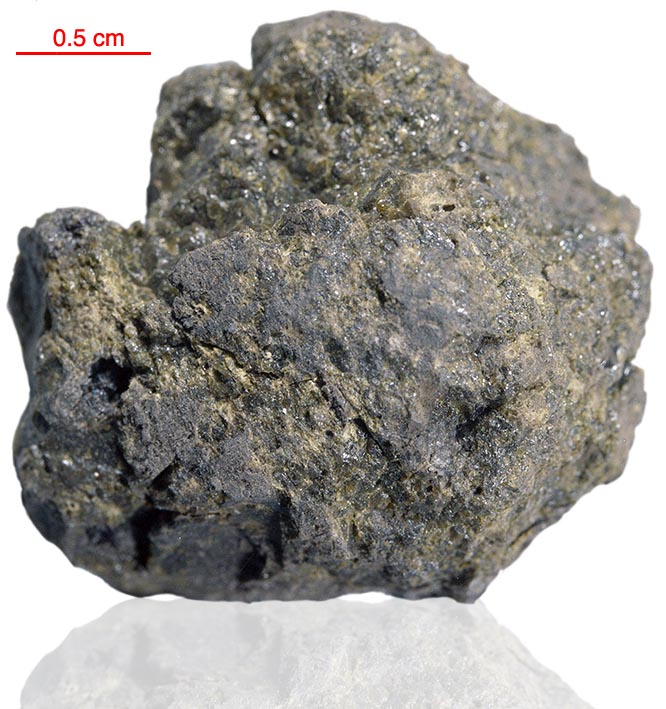
Fact sheet
78526 is a rake sample. It contains both green glass (shown here) and basalt clasts. The glass has very low trace element content. 78526 contains two textural domains. In one, the green glass has feathery pyroxene and acicular, chain olivine and pyroxene. In the other, the green glass has small, hopper olivines and tiny chromite euhedra. Relic grains of olivine, pigeonite, plagioclase, chromite and metallic iron occur in the glass and two types of very low-Ti mare basalt are present as lithic relicts – one has porphyritic texture, the other a granular texture. Our thin section appears to be slightly thick and is covered with circular features most likely caused by laser ablation during elemental analysis.
The sample weighed 8.8 grams before analysis and has not been dated.
Further details of this and other Apollo samples are here: http://curator.jsc.nasa.gov/lunar/
Apollo 17, the final manned landing mission, had two objectives: to obtain samples of ancient rocks from the lunar highlands and to look for evidence of younger volcanic activity on the valley floor.
This small Collection contains material deriving from both periods, including igneous rocks around 4.3 billion years old from the lunar highlands as well as younger volcanic samples dating from about 3.6 billion years ago.
Apollo 17 was launched on 7 December 1972.






